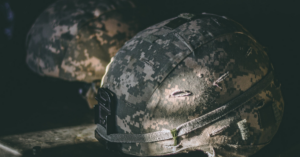
Addressing the Veteran Suicide Epidemic
Not all tragedies for our military occur during combat—or even active duty. On average, we lose 20 service members and veterans daily due to a single cause. Suicide.
Solving this issue is becoming a priority for many state and federal leaders. Earlier this summer, the federal government released the President’s Roadmap to Empower Veterans and End a National Tragedy of Suicide (PREVENTS). Along with a proposed increase in funding for suicide prevention earlier in the year (32% over last year’s budget), the roadmap calls for bolder approaches and public-private collaboration to ensure that veterans receive the care and attention they deserve. The exacerbation of behavioral challenges caused by the pandemic adds even greater urgency to address this issue.
As veterans who founded a company seven years ago for the specific purpose of coordinating services for veteran and military families, we support the focus on veteran suicide prevention and offer our perspective from experience in the field. A comprehensive approach to tackling the suicide crisis should include three elements.
A Common Platform for Coordination Across Communities
First, there must be a common platform for service coordination that includes behavioral health, physical health, and social service providers. Before launching Unite Us, we saw veterans struggle to navigate a hopelessly fragmented delivery system. No organizations had a coordinated way to provide streamlined access to critical services such as employment and housing, and more importantly, no way to track what happens to their clients outside their four walls. We spent hours every day on the phone, searching Google, and using pen and paper to help our brothers and sisters get support. We identified the need for a scalable solution to send, receive, and track electronic referrals, in an ecosystem of service providers. This new wraparound approach connects all organization types, enabling a more comprehensive coordination of care that ensures gaps in services are identified and, most importantly, outcomes are tracked.
Across our health industry, it’s increasingly acknowledged that social determinants of health (SDoH)—where people eat, live, work, play and pray—contribute more to health outcomes than clinical care. In response, significant transformation is underway, with governments, health systems and health plans investing in social services and communities. This shift should be prioritized for the Military connected community.
Focus on Data and Outcomes
Second, it is essential to focus on data and outcomes. We wish that expanding access to mental health services would solve the problem, but we know from experience it won’t. The simple reason is that veterans may be reluctant to seek mental health support and that mental health alone is typically not their only need.
We track the most common services veterans seek within our national networks, and the top service types are housing & shelter (25.4%), income (10.4%0, employment (9.6%), and food assistance (8.7%). At one percent, mental and behavioral health services don’t even make the top 10.
Veterans don’t always know how to seek help with post-traumatic stress or other challenges; they often suffer silently as they grapple to find their purpose upon returning to civilian life. They need not struggle alone. With proper screening and an ecosystem where any organization can get them where they need to go, we can intervene when those crucial needs are identified—most commonly when veterans are seeking access to other social services. This illustrates why an emphasis on data and research is critical. Successful implementation of PREVENTS and other state and federal efforts will require access to data to understand how and where veterans receive services and the impact of interventions on health outcomes.
Work with Communities
Third, a successful strategy must be implemented with support and strategic input from local communities. But leveraging a community’s potential requires both investment and empowerment. When a North Carolina veteran service network invested in technology and the creation of a coordinated provider network, their system became more streamlined and efficient (an 88% drop in average intake processing time), services were delivered in a more timely manner (71% improvement), and positively resolved outcomes increased from 62% to 85%. The national data show that our coordinated care networks are resolving some of the highest needs for veterans at impressive rates: housing & shelter (70% resolved), income support (73% resolved), employment (74% resolved), food assistance (92% resolved), benefits navigation (85% resolved.)
We’re just scratching the surface of how communities can assist in this fight. Veterans deserve a system that keeps an eye on their needs and doesn’t wait until they walk through a health facility’s door. The shocking reality, noted in the PREVENTS executive order, is that “[n]early 70 percent of veterans who end their lives by suicide have not recently received healthcare services from the Department of Veterans Affairs.” They are in the shadows, missing from our system. Coordinated networks, once created, can be used to identify and meet individual needs, conduct proactive monitoring, and provide alerts when someone skips appointments or disappears from the system for an extended period. Even though the technology is simple to use—electronic alerts for case managers—the impact is profound. This is one small way to repay the service these men and women provided to our country.
The Way Forward
While we applaud efforts focused on addressing veteran suicides, we urge the next Administration to require that all plans and providers serving veterans (VA and non-VA) screen for social needs and participate in coordinated community networks to ensure their needs are met within and across communities. This can be accomplished when the Department of Defense updates the rules for TRICARE, the healthcare program for uniformed service members, retirees, and their families.
We started our company serving veterans and now this model has been adopted in 40 states by major plans, systems, and governments serving all populations. We envision a nationwide, coordinated system that connects health and social care for all Americans, including veteran and military families. Our work won’t end until we achieve that goal.
Help us provide resources for the veterans and service members in your state:


